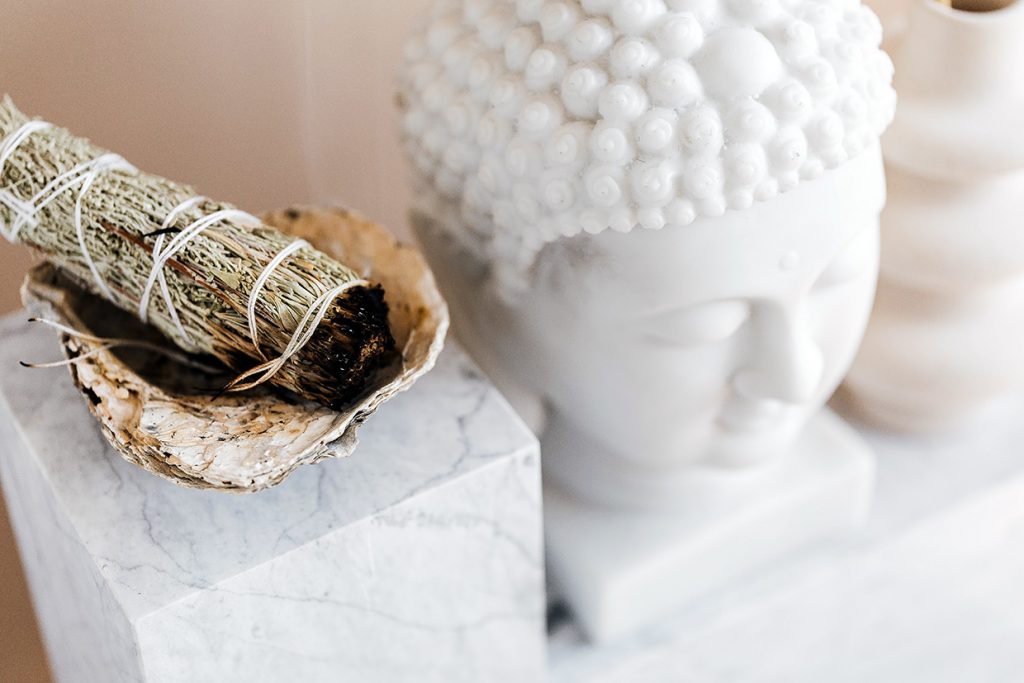It can be the beginning of a change in mindset toward mindfulness and self-growth.
Are you feeling stuck and stagnant while we are still in community quarantine? Maybe you are stressed and anxious about your kids’ online schooling while you’re also busy working from home? These are indications that cleansing is in order. You can take the cue from the ancient ritual of sage burning, also known as smudging.
Sage, also known as Sambong in the Philippines, is a perennial plant belonging to the Salvia mint family. It is derived from the Latin word salvere, meaning “to heal.”
Smudging has its roots in Native American tradition. Shamans burned sage over a fire to cleanse people of negativity and promote healing, wisdom, and longevity. Many other cultures around the world share similar rituals.
Nowadays, we burn sage to cleanse not only ourselves but our homes, objects and other spaces. Medicinal smoke, such as sage, has powerful antimicrobial and antibacterial properties, meaning they keep bacterias, viruses, and fungi at bay and serve as insect repellents.
Research also shows that sage contains thujone, a mildly psychoactive compound that can enhance intuition. This is why healers and even laypeople have used it as a healing and spiritual tool.
Moreover, due to its fragrance, smudging also easily activates receptors in the brain that improve mood and cognition. It reduces stress and anxiety and even alleviates pain. Because of these, sleep quality is also improved and energy levels are boosted.
Add all of these benefits to the grounding and stabilizing power of rituals, smudging is meditative and can keep you focused and purposeful. It can be the beginning of a change in mindset toward mindfulness and self-growth.
WHAT YOU NEED
The practice of smudging is fairly simple with few necessary tools:
• a sage bundle (or smudge stick) which one can order online or in some plant stores
• a seashell or ceramic, clay, or glass bowl to hold burning sage or capture ash
• matches
• optional feather or fan for fanning smoke
HOW TO BURN SAGE
1) Remove animals or people from the room, and make sure to leave the windows and doors open to let the smoke and the negativities escape.
2) Set an intention and repeat a prayer or mantra while smudging. You can create your own depending on your intentions, or you can use some of my favorites:
For getting rid of negativities and obstacles: “Om Gam Ganapataye Namaha.”
For peace and loving-kindness: “Lokah Samastah Sukhino Bhavantu” or “Bhavatu Sabba Mangalam.”
2) Light the end of the smudge stick with a match. If it catches fire, blow it out quickly. The tips of the leaves should smolder slowly, releasing thick smoke.
3) Smudge yourself first by directing this smoke around your body using the feather or fan while holding the smudge stick with the other. Allow the smoke to linger on the areas of your body you’d like to focus on. Make sure not to inhale large amounts of smoke directly, and ensure to hold the smudge stick at a safe distance from your body. If you have long hair, pull it back in a bun.
4) Then, slowly walk around your space in a counterclockwise direction and allow the smoke to waft around. Always stay present! If you see little embers fall on the ground, tamp them out immediately.
Never let the burning sage stay unattended for any reason. Guide the smoke (and the bad energy) toward the open windows or doors with your feather or fan so that it can escape.

Give special attention to areas in front of mirrors, corners, and spaces like foyers, hallways, and doorways. You can also sage technology like your phones and laptops. Hold the smudge stick underneath them and then wave it around them.
5) When you’re done, extinguish the smudge stick by pressing the burning tip firmly into your seashell or bowl until the smoke no longer rises. Do not get it wet as it will ruin the tip of the stick and make it harder to light next time.
Offer a prayer of gratitude to close the ritual. This practice is sacred in many communities and deserves our respect. It’s something we should always do with intention, reverence, and deep gratitude to those who did it before us.
